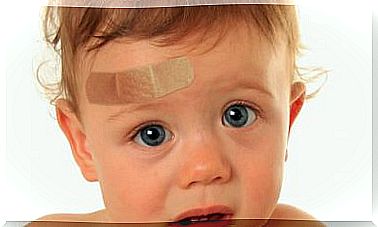Teen Violence: What Happens To Young People?

Adolescent violence can be explained in several ways. The question of what happens to young people also requires investigating the role of adults in this regard.
Violence in adolescence: what happens to young people and adults?
It is worth noting that the role of adults in relation to adolescents can be an important factor and contribute to positively transforming their interests and projects. For this, adults need to be present, but unfortunately this is not always the case.
Is lack of time solely responsible?
Although it is currently necessary to work for many hours, there may be some misinformation about the importance of the role that parents play in their children’s adolescence.
We often hear phrases like: “ My son has grown up, it’s time to walk alone”. While there’s a point to that phrase, just walking our own path doesn’t mean we should be totally out of it.
Just as it happens when our children learn to climb stairs – that is, as we see that they are safe, we increase the body distance between us and them – in adolescence something similar happens. When we feel and trust that they can solve many of the problems on their own, we move away in a healthy way.

Adolescent violence: how do adults deal with conflicts?
How adults handle conflicts is a decisive factor in predicting what will happen to teenagers. Furthermore, setting limits in childhood, whether it was satisfactory or not, can anticipate many of the problems that can occur in adolescence. Violence in adolescence may be related to how to solve problems.
Consequently, it is essential that parents obtain regular counseling in the context of pediatric consultations. Likewise, if possible, when they reach adolescence, it is important that they keep an exchange with a professional specially trained in health issues in adolescence.
Adolescence and Screens
Much has been said and written on this subject. Do violent video games have any influence on the genesis of violence in childhood and adolescence? Common sense might make us think that while there may be some influence, it’s not the only factor.
In this regard, Guillermo Goldfarb, pediatrician and member of the Subcommittee on Information and Communication Technologies of the Argentine Society of Pediatrics, mentions in his text Babies, Children, Adolescents and Screens that “ adults, responsible for the education and care of children, they are also increasingly immersed in their screens, and this situation sometimes creates significant gaps in family communication”.
On the other hand, the author points out that “there seems to be a consensus that the beginning of the child’s interaction with the screens should not take place before the age of 2”, a subject also addressed by professionals from the Valencian Society of Pediatrics.
The recommendations recently published by the American Academy of Pediatrics (AAP) on the subject suggest the transfer of this age to 18 months. Before that age, only real-time video applications such as Skype or Facetime would be allowed, as they are used to communicate with family members who live far away.

What should be taken into account in relation to violence in adolescence
It is important not to lose sight of the fact that the problematic Internet use, including excessive use of games, is a growing concern and that, sometimes, is the source of a decrease in interest in relationships in the real world as well as of numerous “failed attempts to reduce time spent on these activities and withdrawal symptoms,” as highlighted by Dr. Goldfarb.
Additional recommendations
- Monitor child rearing during the different stages.
- Don’t assume that reaching adolescence presupposes the idea of misunderstanding.
- Promoting progressive autonomy from an early age can be a collaborative factor.
- Violence in adolescence does not come from nowhere, but registers a certain pattern and, therefore, can be avoided.









